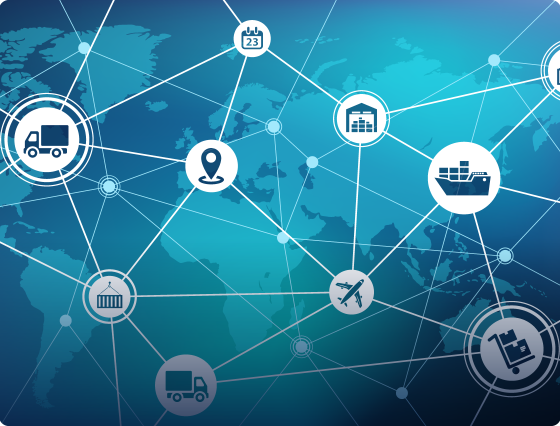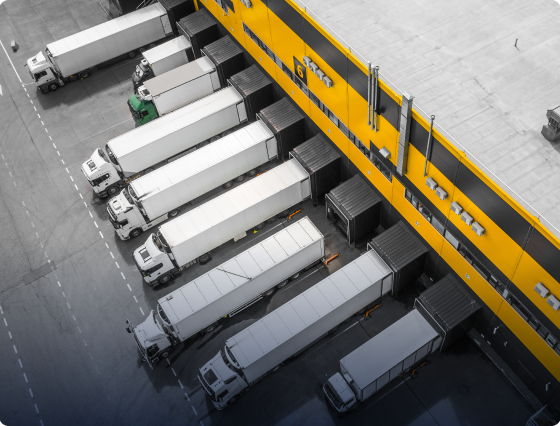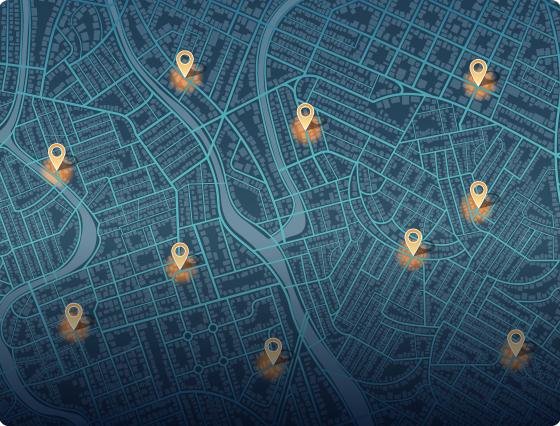
What our customers say about us
The challenge
Logistics companies face a gamut of ongoing challenges, from navigating stricter regulations and driver shortages to shifting customer needs and global disruptions. With the rising importance of sustainability, the complexity is increasing.
The answer lies in adopting a solution that understands your world, enabling you to cope with and effectively manage your specific planning puzzles.
That’s where a virtual twin comes in. It is a dynamic solution that replicates your real-world conditions and constraints, giving you the capability to optimize plans in real time based on your KPIs. With this technology, your planners can see the consequences of their decisions before making them. Imagine the possibilities.
Let’s explore some of your planning challenges.
-
SituationYour customers expect price and timeslot options when placing orders. To meet customer expectations, you must deliver on their chosen timeslot.
-
ComplicationPromising to deliver at a timeslot when you don’t have all the delivery data results in inefficient capacity and route management.
- Question
How can you ensure dynamic and optimized capacity and route planning? -
AnswerCreate a virtual twin with your most likely routes. Then, when orders come in, the routes fill up dynamically, guaranteeing optimal routing and capacity utilization.

- Situation
You manage a complex logistics chain with multiple modes of transport. Even planning a simple one (including an ocean liner, barge, warehouse, and delivery van) is difficult. - Complication
Making the right decision at each part of the chain, considering costs and capacity, is tricky. Each decision may influence all shipments. -
QuestionHow do you optimize all modes of transport while considering costs, capacity, and delivery dates/times?
- Answer
With an optimizer, your planner can quickly find the optimal plan – the lowest costs for executing all shipments (not the same as finding the cheapest solution for each shipment).

-
SituationYour supply chain plans are now more complex with the inclusion of sustainability goals and their related costs.
-
ComplicationMapping environmental goals to costs is difficult. Additionally, your planning solution cannot accommodate those costs into the existing plans.
-
QuestionHow do you ensure your daily planning decisions include your organization’s sustainability costs and aspirations?
-
AnswerDefine a KPI for environmental costs. By training your team on KPI-based planning, you ensure they see the impact of their decisions on environmental goals and costs.

-
SituationYou cannot dynamically change your base plan even though your daily demand for transport capacity fluctuates.
-
ComplicationThe limited availability of transport units forces you to assign shipments to specific routes based on location. You handle this with a slight average over-capacity, but you can still have an abnormally busy day in one area.
- Question
How can you manage the fluctuation in demand for transport capacity with limited transport units? -
AnswerYou create optimal routes based on transport capacity by implementing a solution that allows for dynamic planning.

-
SituationYour planning team spends time executing routine tasks that could be automated using software/AI.
- Complication
Their job becomes more complex because they must balance solving puzzles and executing routine tasks. You can only do so many tasks in a day. -
QuestionHow do you increase the span of control of our planners?
-
AnswerA clear overview of the supply chain plan and automating routine tasks frees up your planners to use their knowledge and expertise where it delivers real value.

-
SituationYou find it difficult to oversee the transport plans across multiple depots to make optimal cost combinations and calculations.
-
ComplicationDifferent planners make the transport plan for each Distribution Center (DC). Combining all those plans to have a single source of truth is nearly impossible.
-
QuestionHow can you obtain complete visibility of plans across all DCs to optimize multi-depot planning?
-
AnswerImplement planning software that holds all DC plans and identifies opportunities for efficiency by combining transport plans from different DCs.

-
SituationYour customers expect price and timeslot options when placing orders. To meet customer expectations, you must deliver on their chosen timeslot.
-
ComplicationPromising to deliver at a timeslot when you don’t have all the delivery data results in inefficient capacity and route management.
- Question
How can you ensure dynamic and optimized capacity and route planning? -
AnswerCreate a virtual twin with your most likely routes. Then, when orders come in, the routes fill up dynamically, guaranteeing optimal routing and capacity utilization.

- Situation
You manage a complex logistics chain with multiple modes of transport. Even planning a simple one (including an ocean liner, barge, warehouse, and delivery van) is difficult. - Complication
Making the right decision at each part of the chain, considering costs and capacity, is tricky. Each decision may influence all shipments. -
QuestionHow do you optimize all modes of transport while considering costs, capacity, and delivery dates/times?
- Answer
With an optimizer, your planner can quickly find the optimal plan – the lowest costs for executing all shipments (not the same as finding the cheapest solution for each shipment).

-
SituationYour supply chain plans are now more complex with the inclusion of sustainability goals and their related costs.
-
ComplicationMapping environmental goals to costs is difficult. Additionally, your planning solution cannot accommodate those costs into the existing plans.
-
QuestionHow do you ensure your daily planning decisions include your organization’s sustainability costs and aspirations?
-
AnswerDefine a KPI for environmental costs. By training your team on KPI-based planning, you ensure they see the impact of their decisions on environmental goals and costs.

-
SituationYou cannot dynamically change your base plan even though your daily demand for transport capacity fluctuates.
-
ComplicationThe limited availability of transport units forces you to assign shipments to specific routes based on location. You handle this with a slight average over-capacity, but you can still have an abnormally busy day in one area.
- Question
How can you manage the fluctuation in demand for transport capacity with limited transport units? -
AnswerYou create optimal routes based on transport capacity by implementing a solution that allows for dynamic planning.

-
SituationYour planning team spends time executing routine tasks that could be automated using software/AI.
- Complication
Their job becomes more complex because they must balance solving puzzles and executing routine tasks. You can only do so many tasks in a day. -
QuestionHow do you increase the span of control of our planners?
-
AnswerA clear overview of the supply chain plan and automating routine tasks frees up your planners to use their knowledge and expertise where it delivers real value.

-
SituationYou find it difficult to oversee the transport plans across multiple depots to make optimal cost combinations and calculations.
-
ComplicationDifferent planners make the transport plan for each Distribution Center (DC). Combining all those plans to have a single source of truth is nearly impossible.
-
QuestionHow can you obtain complete visibility of plans across all DCs to optimize multi-depot planning?
-
AnswerImplement planning software that holds all DC plans and identifies opportunities for efficiency by combining transport plans from different DCs.

Ensure your logistics planning is both optimal and sustainable
Optimal planning against all constraints
Your business is complex, with unique constraints and rules. By adopting a virtual twin, your planning solution perfectly aligns with your business reality, so you won’t need to find workarounds.
More efficient and faster planning
Using logistics software that automates administrative, communicative, and safety tasks frees up time. Your planners can focus on actions that deliver the most value.
Real-time visibility and KPI-based planning
Immediately see the effects of your decisions on company KPIs, ensuring every plan aligns with your goals. This leads to long-term growth and success of your organization.
Planning with what-if scenarios
With the ability to compare multiple scenarios, you make the best decisions based on transport capacity and customer demand to drive value and ensure you deliver high levels of service.
Decision-support and word-class optimization
By implementing a virtual twin, you ensure that your planners continuously optimize in an ever-changing world. Having the right information at the right time empowers you to make the best decisions and the most optimal plans.
Sustainable Planning
By ensuring logistics across your supply chain are optimized, you can reduce your carbon footprint. Planning this way will help you meet environmental regulations and reduce greenhouse emissions.





